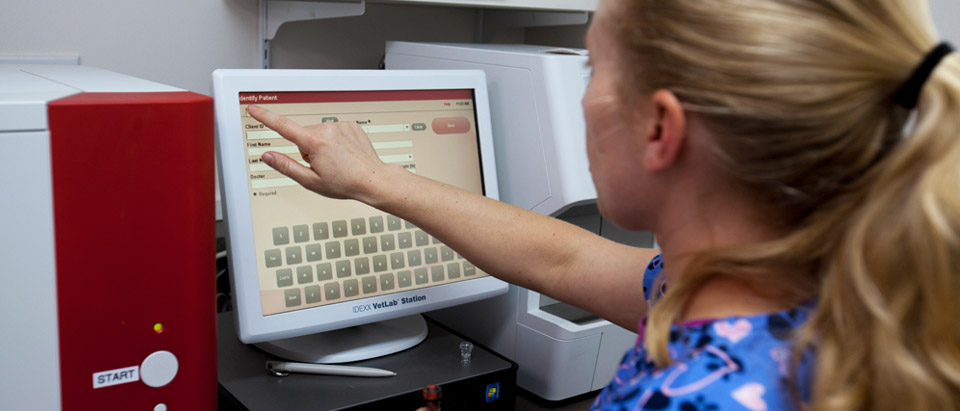
Since your sick pet cannot tell us what is wrong, veterinarians must sometimes supplement physical exams with sophisticated diagnostic testing. Our hospital is equipped with a complete, sophisticated diagnostic laboratory that allows us to measure more than 100 laboratory values, with results often available in a few minutes. In addition, if your pet requires specialized testing, we work with several outside referral labs.
Complete blood count, blood-chemistry panel, urinalysis and fecal examination are some of the most common laboratory tests performed at our hospital.
Radiographs (x-rays) are useful in evaluating a number of areas of your pet’s body including muscular-skeletal, cardiovascular (cardiopulmonary), gastrointestinal, reproductive and urinary systems. With the advent of direct digital radiography, our hospital is able to take high-quality, digital x-rays of your pet. Our digital radiography unit is state-of-the-art technology and produces the best images possible. Direct digital radiographs are extremely helpful for diagnosing and monitoring many medical and surgical problems.
The advantage of direct digital radiology are many. The time spent taking your pet’s radiographs is significantly shortened and fewer pictures need to be taken to achieve diagnostic-quality results. This means less stress for your pet, making their visit much more pleasant! A veterinary radiology boarded specialist will review the findings to diagnose and treat your pet. In addition, the quality of digital images is superior to traditional radiographs.
Ultrasound is a valuable, non-invasive imaging procedure that complements x-rays and allows our veterinarians to better visualize internal organs in the chest and abdomen. During an ultrasound, high-frequency sound-waves are directed into the body and bounce off the organs, creating a computer image of the inside of the body. This painless diagnostic technique is normally done without the sedation of your pet.
Ultrasound is invaluable for making treatment decisions for various types of heart disease. It also allows us to biopsy organs such as the liver and kidney, spleen or prostate through a tiny “keyhole” incision. Ultrasound works best in conjunction with other diagnostic procedures. For example, if an x-ray detects a lesion, an ultrasound can determine the origin of the lesion and whether it has spread elsewhere in your pet’s body. Using the ultrasound image as a guide, surgical biopsies can be obtained without major surgery and your pet can often go home the same day.
Finally, ultrasound can also be used in emergencies, such as when a splenectomy is necessary. This time sensitive surgery is an example of how the ultrasound machine can save lives. After a time sensitive diagnosis, the surgery can quickly follow.